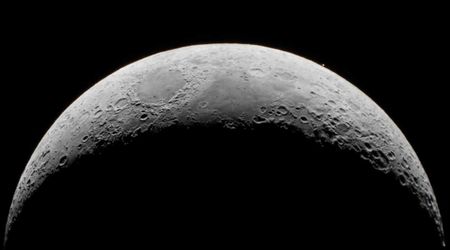Buck Moon 2025: How to catch the perfect glimpse on July 10

The full moon of July, traditionally known as the Buck Moon, is set to illuminate the night sky on July 10. A Full Moon occurs when the lunar sphere is positioned on the side of Earth opposite the Sun, resulting in a fully illuminated disk visible from our planet. The precise moment of the Moon's complete illumination is expected at 4:37 p.m. Eastern Daylight Time (2037 UTC) on July 10, reported Space.com.

This year's Buck Moon will be uniquely situated within the Sagittarius constellation, specifically nestled within the well-known Teapot asterism. Observers should direct their gaze towards the south-southeast as the Moon ascends, gradually traversing the southern sky before setting in the southwest during the early morning hours, according to the BBC. Due to Sagittarius's position, the Moon will maintain a remarkably low profile, making a clear and unobstructed view of the southern horizon crucial for optimal visibility.

While Buck Moon's exact peak illumination may fall during daylight hours for much of North and South America, the most spectacular viewing will be after local sunset on July 10, when the Moon rises fully illuminated on the eastern horizon. For optimal visibility, sky-watchers are encouraged to begin their viewing approximately 30-60 minutes after the Sun dips below the horizon, according to Space.com.
In the Northern Hemisphere's mid-latitudes, including cities like New York City, the moon will emerge later in the evening, with moonrise on July 10 occurring around 8:54 p.m. EDT, shortly after sunset at 8:28 p.m. EDT. During the summer months, the Sun's higher arc in the sky means the full moon follows a correspondingly lower trajectory, resulting in shorter periods above the horizon. For instance, in New York, the moon will set at 5:57 a.m. on July 11, providing just over nine hours of visibility.
Conversely, in the Southern Hemisphere, the conditions are markedly different. For example, in Melbourne, Australia, the full moon phase arrives at 6:37 a.m. local time on July 11. As July marks winter in this region, the moon makes an earlier appearance, rising at approximately 5:26 p.m. on July 11. It then remains visible until moonset at 8:40 a.m. the following morning, July 12, offering a considerably longer viewing window stretching over 15 hours.

The Buck Moon, while visible from nearly any location worldwide, presents its most breathtaking display in open environments, from elevated terrain, and away from the interference of urban light pollution. Prime viewing locations include tranquil rural hilltops, expansive east-facing beaches, vast deserts, or national parks that maintain minimal artificial illumination. Astronomy organizations also emphasize the importance of a clear line of sight to the eastern horizon for observers. Regardless of whether you are in Europe, Africa, or the Americas, the Buck Moon is a universally accessible celestial event, requiring no specialized equipment for general observation, as per The Economic Times.

Beyond its apparent size, the Buck Moon may also present a striking orange hue. This vibrant coloration is not inherent to the moon itself but rather a captivating byproduct of Earth's atmosphere. As moonlight pierces through the thicker atmospheric layers near the horizon, blue and violet light scatter, leaving behind the warmer reds and oranges that create this stunning visual effect, per the BBC. Also, keep an eye out for another common lunar spectacle: a bright halo encircling the Buck Moon. This intriguing display occurs when moonlight interacts with surrounding clouds, producing luminous rings and other captivating light phenomena. Those observing the Buck Moon should be vigilant for these optical illusions, adding another layer of wonder to the night's viewing experience.









